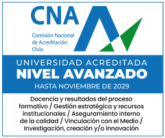Chitosan is an exciting alternative for the development of coating-surfaces due to its large action spectrum against pathogenic microorganisms. However, to produce a stable coating with effective antibacterial action, a compromise between deacetylation degree (DD) and molecular weight (MW) is essential. Four chitosan samples were characterized regarding Mw and DD and correlated with the minimum and bactericide concentrations against E. coli, P. aeruginosa, and S. aureus. CHI80MW (79.7% DD and 7.0 × 105 Da) showed the best antibacterial effect and was selected to functionalize polytetrafluoroethylene (PTFE) surfaces by plasma. CHI80MW was grafted onto the PTFE surfaces using two different spacer molecules: poly(ethylene glycol) bis (carboxymethyl) ether (PEG) and poly(ethylene-alt-maleic anhydride) (PA). PTFE-Plasma-PA-CHI80MW exhibited a coating with more attached chitosan and better antibacterial action if compared to PTFE-Plasma-PEG-CHI80MW: after 8 h, PTFE-Plasma-PEG-CHI80MW presented a bacterial reduction of 25-30% for the three bacterial strains, and PTFE-Plasma-PA-CHI80MW reduced them to 77-90%. Moreover, cytotoxicity tests showed that PTFE-Plasma-PA-CHI80MW samples were compatible with human fibroblasts.
Keywords: Antibacterial coating; Chitosan’ plasma-grafting; PTFE substrate; Biomedical devices.



